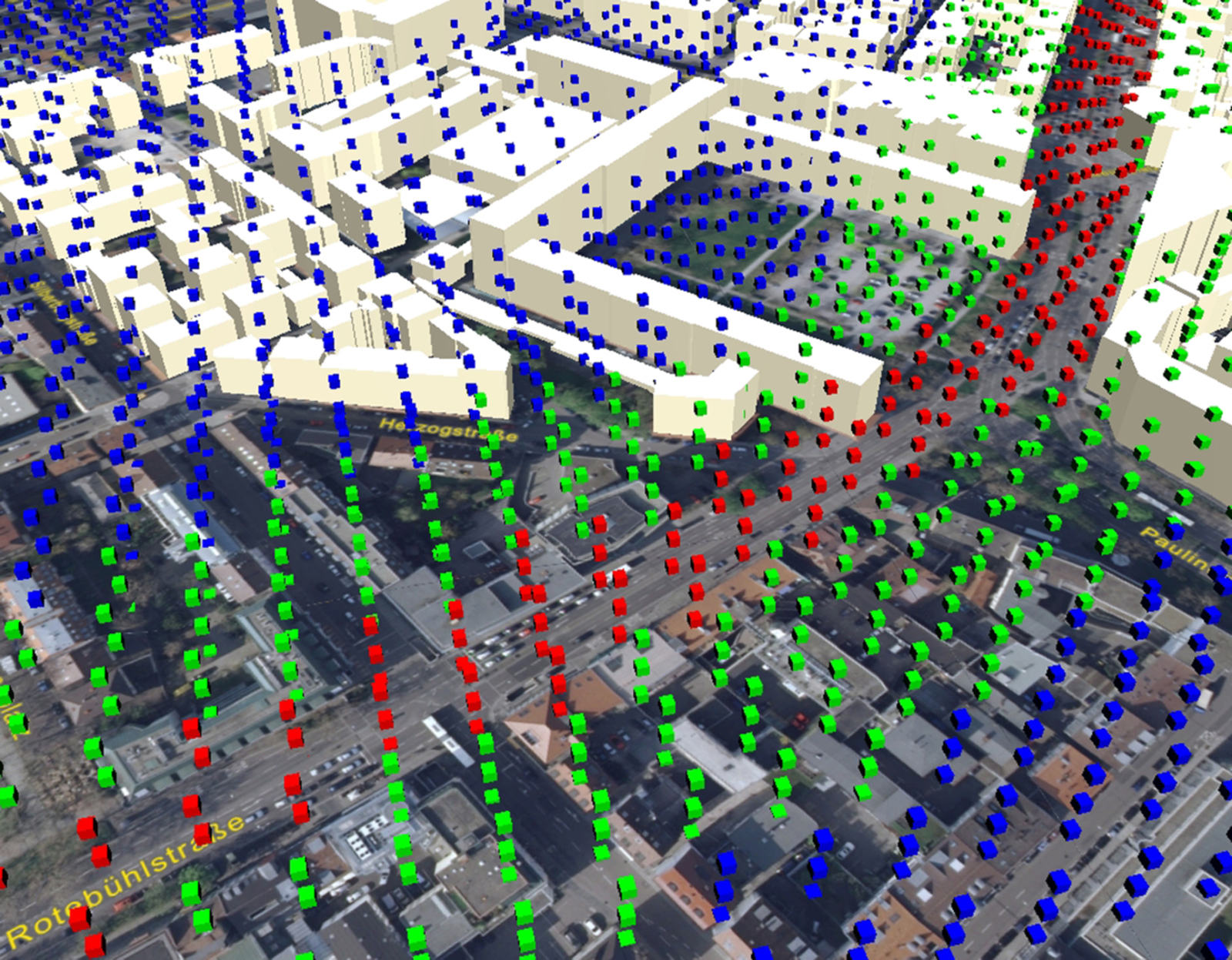Three-dimensional tools will soon make it easier to simulate those issues: as the user virtually moves through his city, the corresponding data are displayed as green, yellow or red dots.
Fine dust, aircraft noise and the buzz of highways have a negative impact on a city‘s inhabitants. Urban planners have to take a lot of information into consideration when planning new highways or airport construction. What is the best way to execute a building project? To what extent can the ears – and nerves – of local residents be protected from noise? Previously, experts used simulation models to determine these data. They obtain the data as 2D survey maps; however, these are often difficult to interpret, since the spatial information is missing.
In the future, urban planners will be able to virtually move through a three-dimensional view of the city. In other words, they will “take a walk” through the streets, no 3-D glasses required. The corresponding values from the simulation “float” at the associated locations on the 3D map – where noise data might be displayed using red, yellow or green boxes. The distances between data points currently equal five meters, but this can be adjusted according to need. The user determines how the map is displayed – selecting a standpoint, zooming in to street level or selecting a bird’s-eye perspective. This can provide quick help in locating problems such as regions with heavy noise pollution.

Credit: Fraunhofer Institute for Industrial Engineering IAO
Electric cars do not reduce noise levels
Another interesting consideration that the researchers were able to visualize with this tool: if electric vehicles alone were driven in the city, instead of cars with internal combustion engines, how would this change the volume level? What if both gas-driven and electric motor vehicles were on the roads? “Admittedly, you can barely hear electric cars when starting up. At about 30 kilometers per hour, however, you start to hear rolling noises that can get really loud at speeds of 50 kilometers per hour.
Initial simulations found that the conventional simulation models stipulated by public agencies tend to average too sharply: we have yet to see any significant difference in the noise level in electric vehicles or gas-driven cars, since apparently it‘s the rolling noise that predominates,” says Blach. Researchers are presenting these simulations, using Stuttgart as an example, at the Hannover Messe from April 23–27 (Hall 26, Booth C08).
The 3D map is only one of the tools developed by researchers in the “Virtual Cityscape” project. Another is parametric modeling. Here, a structure is designed such that any subsequent changes to dimensions can be made simply by entering the new measurements. If new buildings are to be planned, the scientists first analyze the logistical flows. How many people pass through which halls and corridors? What goods have to get through? “The program takes these usage parameters into account, and automatically incorporates them into the planning,” explains Blach.
For example, if only standard windows are supposed to be used in a building, and the architect enlarges a space, then the program automatically places the windows at the appropriate distances or even inserts another one if space allows.





Comments